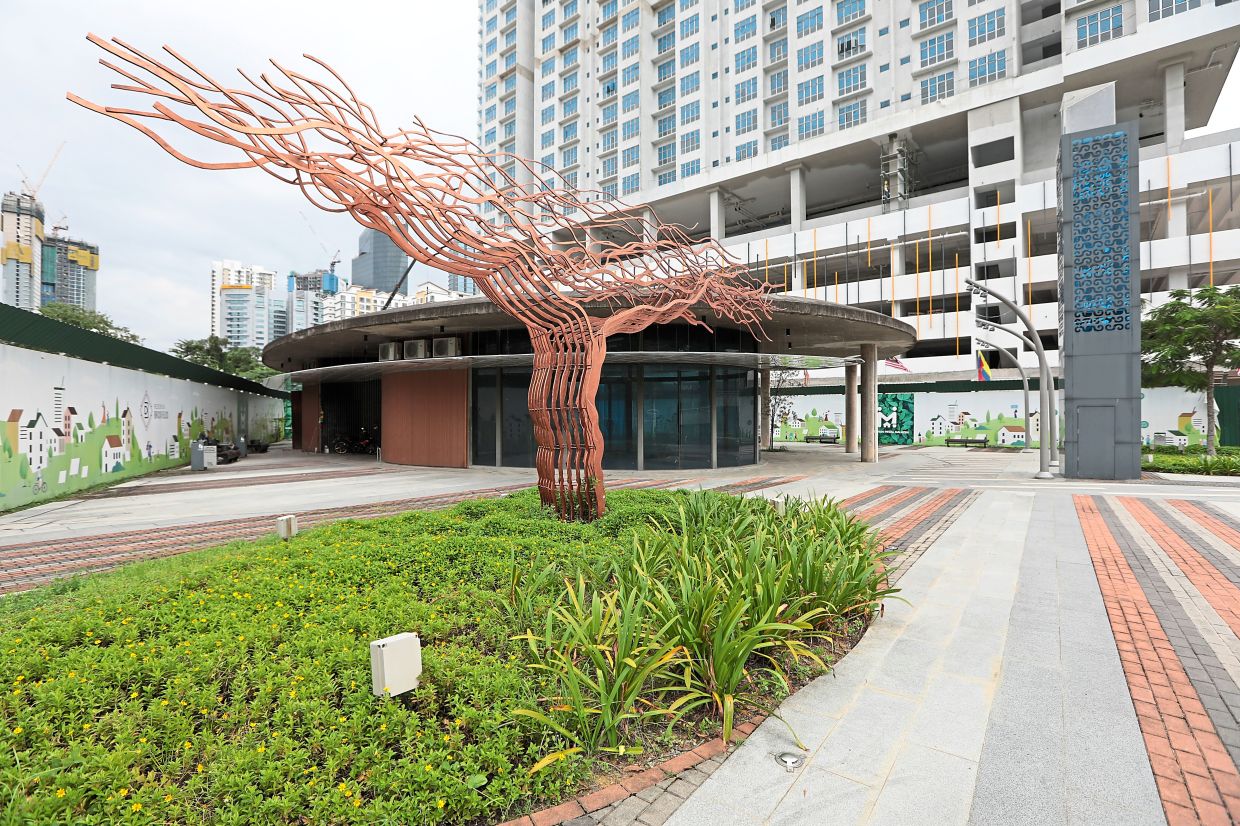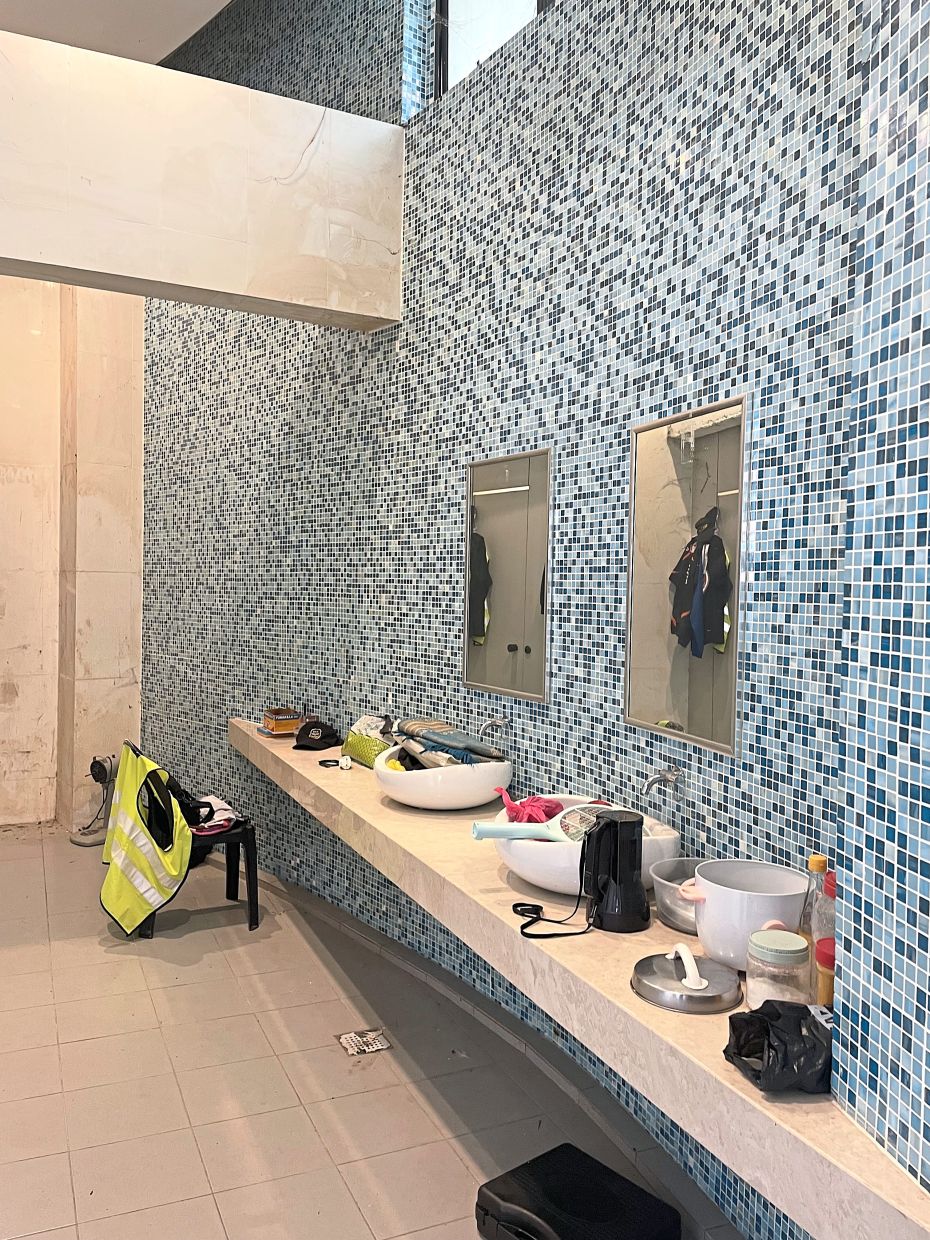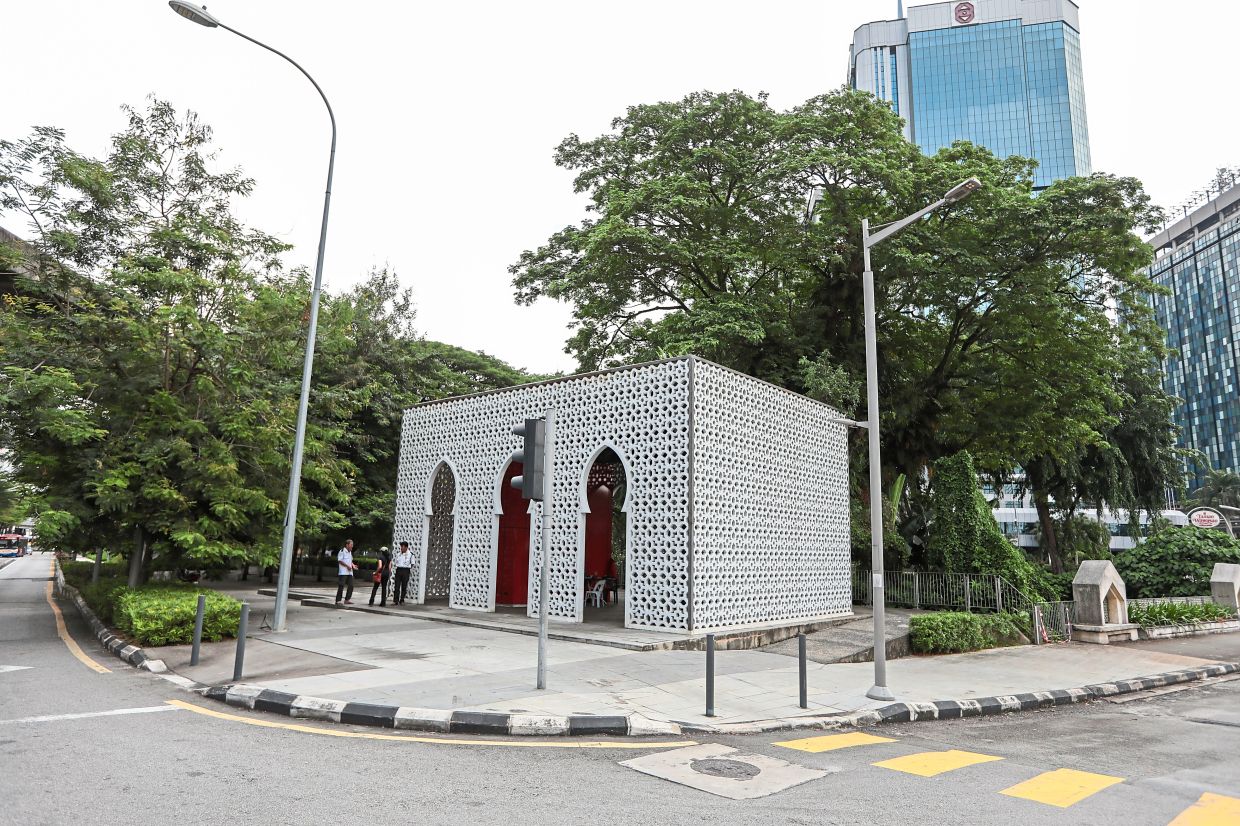Buildings meant for public use and community activites but now left derelict will be repaired, says Kuala Lumpur City Hall
Millions of ringgit in assets for a beautification project that is a part of the River of Life (RoL) project in Brickfields, Kuala Lumpur, are currently underutilised and rundown.
At least four structures and two public toilets under Kuala Lumpur City Hall (DBKL), located along a 3km-long footpath next to Sungai Klang riverbank from Central Market to MidValley Megamall shopping centre, appear to be in a poor state and used by vagrants and drug addicts for shelter at night.
ALSO READ: Residents keen to step up and take care of RoL sites
Although relatively new, these buildings have never been opened to the public and are showing signs of vandalism and neglect.
To prevent further encroachment, DBKL has stationed security guards there around the clock.
However, the purpose of these structures remains a mystery as the guards told StarMetro that they were also in the dark.
RoL comprises 11 precincts, from Titiwangsa Lake Gardens in the north to MidValley in the south.
It includes a 10.7km stretch along Klang and Gombak rivers which have been developed to support recreational activities – walking, jogging, cycling and picnicking.
The Brickfields portion is precint 11, the last stretch.
Since the inception of phase one in Aug 29, 2017, there has been no designated ministry or agency to manage and maintain RoL sites.
The government’s plan to appoint a private firm did not pan out.
Unsurprisingly, since there was no one to take over the city’s most expensive and ambitious project, some RoL assets have fallen into disrepair.
In 2020, the then Federal Territories Ministry gave DBKL the responsibility of maintaining the project.
City Hall was tasked with repairing the damage and several million was allocated in phases to contractors via balloting back in September 2020.
But DBKL has been grappling with the task of fixing and keeping RoL assets in good order.
Glorified storage room
One of the structures being guarded by four men over two shifts is located at the Jalan Sultan Sulaiman traffic light junction.
The box-like building, measuring about 10.67m by 7.62m with Islamic and vintage design features, looks like a rest area.
But there is no signage to indicate its purpose, so city waste workers have been using it to store their brooms.
Sometimes, it is used as a motorcycle parking spot.
When StarMetro visited recently, security guards manning the site said they were not aware of the structure’s name and had tried finding out on the Internet.
“We get people passing through here and asking us about this place, but we don’t know anything.
“We are tasked with making sure that no one sleeps there or vandalises the place,’’ said a guard, adding that during the Covid-19 pandemic, homeless people would sleep there at night.
While the exterior appeared new, the interior was already showing signs of wear and tear, with a leaking roof.
There is no water, toilet or electricity, so this building also remains a mystery.
Gallery or shelter?
Further down the road, there are three other structures that look like shelters.
Pathways along the riverbanks are equipped with boardwalks and pavements, with guiding lights at night.
The Federal Territories Department website describes these structures as “guiding galleries” which are supposed to be information centres.
Benches have been placed there for people to stop and rest but no one has been using them.
Joggers and cyclists too say they rarely stop at these spots.
“It’s not safe. I have seen people get high there,” said jogger Lucas Tan, 26, from Bangsar South.
“I needed to use a bathroom once, so I stopped and went into one of these structures.
“I had no idea there were no toilets there, but I saw a guy smoking in one of the rooms inside.
“The place was a mess and the guy looked like he was out of it,” Tan added.
Another cyclist, who did not wish to be identified, related a similar experience and added that the place was being occupied by drug addicts or vagrants.
“There are old clothes and blankets and lots of rubbish inside.
“It’s such a pity because from the outside, you can’t tell as it looks quite posh,’’ he said.
Cyclist Trio Saputra, 28, said he often cycled from Batu Caves to MidValley on weekends, covering about 50km both ways.
“I would say the Pasar Seni (Central Market) stretch of River of Life is the worst with lots of bumps, broken tiles and mounds,’’ he said.
Some guiding lights placed along the pathway were also not working, making the area unsafe at night.
“The design of the light itself is unusual, because the beam of light is confined to one spot and does not illuminate the entire area,” Tan added.
When StarMetro visited the “guiding galleries”, the one called Southern Guiding Gallery near Jalan Ang Seng looked derelict.
One of the rooms had missing windows while rubbish, plastic bottles and polystyrene containers were strewn around.
There were hundreds of cigarette butts scattered on the floor as well as many disposable plastic cigarette lighters.
Further down the path, a bigger structure next to the ongoing Pr1Ma Brickfields project has a copper tree out front for decorative purposes.
The building, under lock and key, has toilet facilities but is off-limits to the public.
That said, the facility also appears to have been turned into a storage and cooking facility for security guards stationed there and looked to be in poor shape.
The RM4.4bil RoL project consists of three stages — river cleaning, river beautification and riverfront development.
A sum of RM3.4bil was set aside to clean up the rivers while RM1bil was allocated towards beautification and landscaping.
The project was launched in 2012 under the Economic Transformation Programme initiated by then prime minister Datuk Seri Najib Razak.
It was targeted to be completed in 2020, with commercialisation and tourism to commence soon after.
However, during a walkabout at the site in 2020, then Federal Territories Minister Tan Sri Annuar Musa said the project deadline had been pushed to 2024 to allow the completion of some work packages.
Meanwhile, in a written statement, DBKL’s corporate communications unit conceded that some of the structures were a component of the River of Life project.
The structures were created for public use, and could be used as a space for exhibitions, community programmes or even a mini cafe.
The department wrote that it was aware of the present state of the structures and added that the project implementation and building maintenance department would be repairing the structures.













